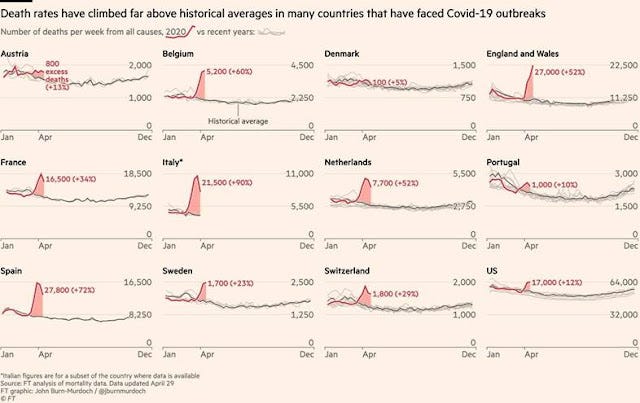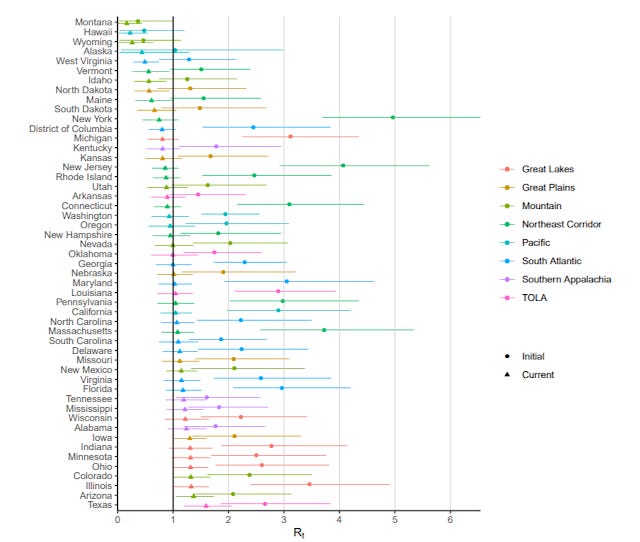COVID-19: Why are the numbers varying so much?
Today's COVID-19 Number in Massachusetts is either 93,000 or 900,000

Signifying nothing special - a photo from a bike ride from Concord to Harvard, MA, this Saturday
We all seek certainty - and objective measures reassure us more than subjective measures. That's why it's so disconcerting that numbers around COVID-19 keep on changing! There are good reasons for numbers to vary wildly, and there are bad reasons. A few thoughts about four critical numbers
How many cases of COVID-19 are there in the community?
My state of Massachusetts reports that there have been 93,000 cases as of this weekend. But on Friday the Imperial College of London calculated that there have been almost 900,000 cases - about 13% of the population! The state number is almost certainly low - as most of us know people who had COVID-19 and were never tested. The Imperial College number likely isn't fully accounting for behavior change that lowers risk, so it's probably too high. The real answer is probably somewhere between these two.
How many people have died of COVID-19?
Official death tolls are probably low. In some communities deaths are only "counted" if the decedent was tested, and in the early months there were few tests available. Some states are counting nursing home deaths that are "consistent with" COVID-19; this could lead to some overcounting, as some of these residents were old with severe multisystem illness, and would have died anyway. Some have suggested that we should count the total number of excess deaths compared to the last few years, which would mean that people who died of a heart attack because they were too scared to call an ambulance would be counted. Note that excess deaths is how we know that the likely death toll from Hurricane Maria in 2017 in Puerto Rico was over 3000, when the official death toll was 64. Here is information about excess deaths during the pandemic in multiple countries including the US.

Source: Financial Times
Is the rate of COVID-19 infections going up or down in the community?
This is very sensitive to how many tests are being done. If we do more tests, we find more cases. If tests are in short supply, more cases escape detection. One special issue from last week is that the CDC and some state health departments started mixing Antibody test results (for past infections) and PCR tests (for acute infections). That artificially depressed the apparent portion of tests that were positive - which could lead to bad public policy decisions. The CDC has agreed to report these separately in the future.
What is the "R Naught" (R0), the rate of contagiousness?
We should feel more comfortable that the worst of the pandemic is behind us if we know that each new case is infecting less than 1 additional people. Reports over the weekend (again, from the Imperial College) suggest that the R0 is actually above 1 in almost half the states. Notice there is a pretty substantial confidence interval - so that only Texas and Arizona currently have an R0 >1 -or it might be as many as 20 states that where number of those infected is likely to continue to expand.

